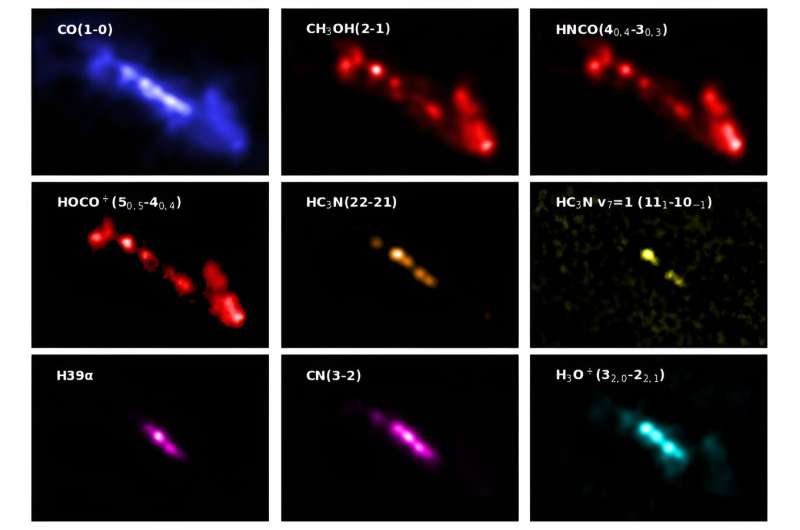This article has been reviewed according to Science X's editorial process and policies. Editors have highlighted the following attributes while ensuring the content's credibility:
fact-checked
trusted source
proofread
ALMA finds new molecular signposts in starburst galaxy

The ALMA radio telescope has detected more than 100 molecular species, including many indicative of different star formation and evolution processes, in a galaxy where stars are forming much more actively than in the Milky Way. This is far more molecules than were found in previous studies. Now the team will try to apply this knowledge to other galaxies. The research is published in The Astrophysical Journal Supplement Series.
A team of researchers led by Sergio Martin of the European Southern Observatory/Joint ALMA Observatory, Nanase Harada of the National Astronomical Observatory of Japan, and Jeff Mangum of the National Radio Astronomy Observatory used ALMA (Atacama Large Millimeter/submillimeter Array) to observe the center of a galaxy known as NGC 253.
NGC 253 is located about 10 million light-years away in the direction of the constellation Sculptor. NGC 253 is an example of a starburst galaxy, a galaxy where many new stars are forming rapidly. The factors leading to the onset of a starburst are still not well understood.
The birth, evolution, and death of stars change the molecular composition of the surrounding gas. ALMA's high sensitivity and high resolution allowed astronomers to determine the locations of molecules indicative of the various stages in the life cycle of stars.
This survey, dubbed ALCHEMI (ALMA Comprehensive High-resolution Extragalactic Molecular Inventory), found high-density molecular gas that is likely promoting active star formation in this galaxy. The amount of dense gas in the center of NGC 253 turned out to be more than 10 times higher than that in the center of the Milky Way, which could explain why NGC 253 is forming stars about 30 times more efficiently.
The ALCHEMI survey also provided an atlas of 44 molecular species, doubling the number available from previous studies outside the Milky Way. By applying a machine-learning technique to this atlas, the researchers were able to identify which molecules serve as the best signposts to trace the story of star formation from the beginning to the end. This knowledge will help in planning future ALMA observations.
More information: Nanase Harada et al, The ALCHEMI Atlas: Principal Component Analysis Reveals Starburst Evolution in NGC 253, The Astrophysical Journal Supplement Series (2024). DOI: 10.3847/1538-4365/ad1937
Provided by National Institutes of Natural Sciences




















